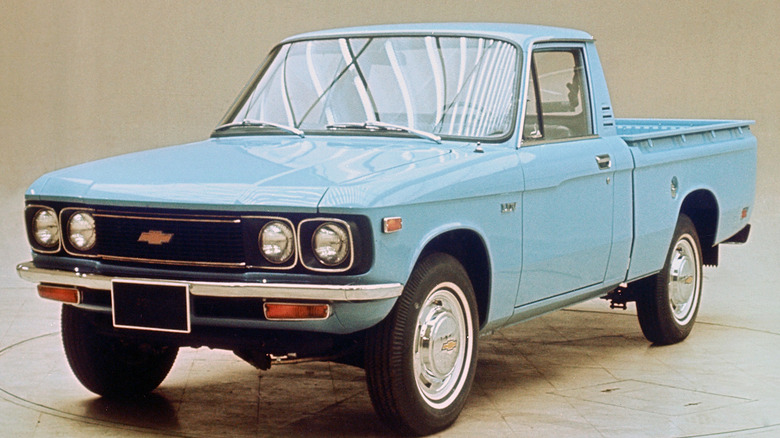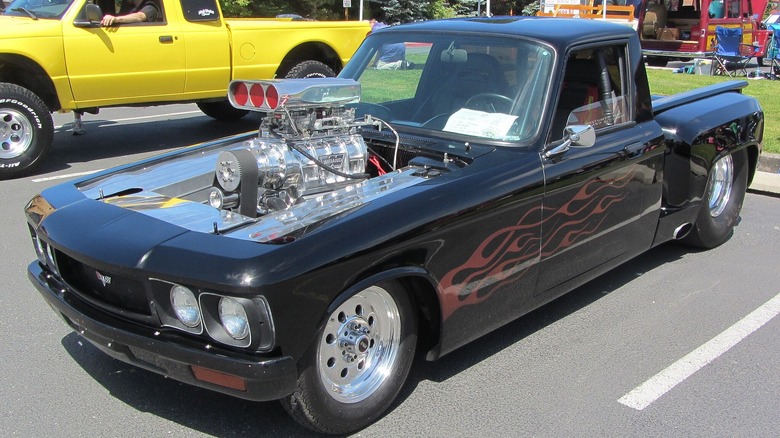The Classic Mini-Truck We Wish Chevrolet Would Bring Back
Fifty years ago, Detroit's "Big Three" automakers were caught off guard when compact, inexpensive trucks from the likes of Datsun and Toyota started to gain popularity with American consumers who just wanted something basic. Eventually, U.S. manufacturers would develop their own designs such as the Ford Ranger and Chevy S-10 but to fill the immediate void, the quickest way to gain market share against the Japanese imports was to import some Japanese trucks of their own and rebadge them with familiar American brand names, a process known as captive import.
While Ford chose to collaborate with Mazda and Dodge picked Mitsubishi, Chevrolet selected the Isuzu Faster for its mini-truck endeavor. The little Isuzu was badge-engineered to become Chevy's LUV, short for Light Utility Vehicle. Like many other imported pickup trucks of the era, the LUV was shipped across the Pacific as a chassis cab to avoid paying the hefty 25% "Chicken Tax," with the installation of its cargo bed taking place later on U.S. soil.
In 1972, the LUV burst onto the scene with 75 angry horsepower and 88 ft-lbs of torque from its 1.8-liter four-cylinder. On the bright side, it did get good fuel economy — up to 33 mpg on the highway — which would become important as the oil crisis loomed later in the decade. Its six-foot-long cargo bed could carry an impressive 1480 pounds. Initially, the only available transmission was a four-speed manual.
The LUV became an unlikely platform for hot rodders
The LUV became more feature-packed throughout the 1970s, with an available automatic transmission, seven-and-a-half-foot-long cargo bed, and optional four-wheel drive for $971. Coinciding with the release of a four-wheel drive version in 1979, the LUV was crowned "Truck of the Year" by Motor Trend. That same year, LUV sales reached an all-time high of 100,192 units.
By 1980, LUV sales were declining as competitors offered niceties such as more horsepower and extended passenger cabs with small jump seats or extra storage behind the front seats, neither of which the LUV had. The LUV was completely redesigned for the 1981 to 1982 model years, but it was too little, too late. Especially since Chevy's own S-10 compact pickup — which was larger than the LUV but smaller than the brand's full-size C/K truck — was introduced in 1982 and marketing two smallish trucks was considered redundant. Not surprisingly, the LUV was killed off after 1982 in the United States.
Nowadays, the first-generation 1972 to 1980 LUVs have been discovered by the hot rod crowd, especially since its anemic 1.8-liter four-cylinder engine can be easily swapped out for a conventional small block Chevy V8 or the perennial favorite LS-swap. One such example, called Luvzilla, cranks out an estimated 1,500 hp — that's 20 times the 75 horsepower output of the original 1972 LUV and light years from its humble beginnings.
[Featured image by JOHN LLOYD from Concrete, Washington, United States via Wikimedia Commons | Cropped and scaled | CC BY 2.0]

